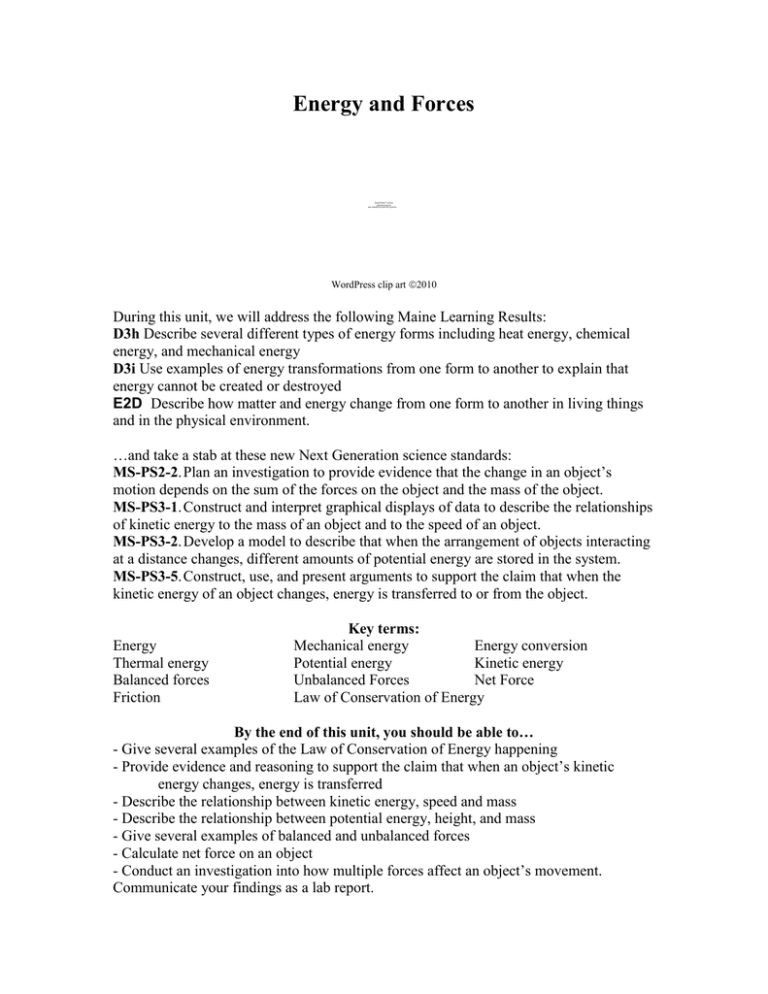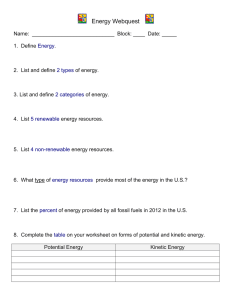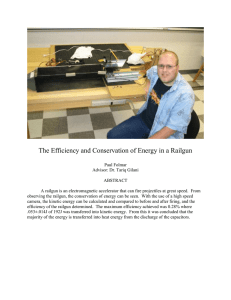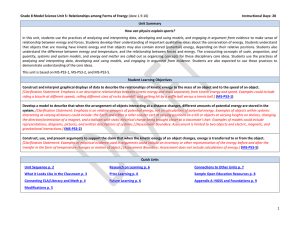Energy and Forces
advertisement

Energy and Forces QuickTime™ and a decompressor are needed to see this picture. WordPress clip art 2010 During this unit, we will address the following Maine Learning Results: D3h Describe several different types of energy forms including heat energy, chemical energy, and mechanical energy D3i Use examples of energy transformations from one form to another to explain that energy cannot be created or destroyed E2D Describe how matter and energy change from one form to another in living things and in the physical environment. …and take a stab at these new Next Generation science standards: MS-PS2-2. Plan an investigation to provide evidence that the change in an object’s motion depends on the sum of the forces on the object and the mass of the object. MS-PS3-1. Construct and interpret graphical displays of data to describe the relationships of kinetic energy to the mass of an object and to the speed of an object. MS-PS3-2. Develop a model to describe that when the arrangement of objects interacting at a distance changes, different amounts of potential energy are stored in the system. MS-PS3-5. Construct, use, and present arguments to support the claim that when the kinetic energy of an object changes, energy is transferred to or from the object. Energy Thermal energy Balanced forces Friction Key terms: Mechanical energy Energy conversion Potential energy Kinetic energy Unbalanced Forces Net Force Law of Conservation of Energy By the end of this unit, you should be able to… - Give several examples of the Law of Conservation of Energy happening - Provide evidence and reasoning to support the claim that when an object’s kinetic energy changes, energy is transferred - Describe the relationship between kinetic energy, speed and mass - Describe the relationship between potential energy, height, and mass - Give several examples of balanced and unbalanced forces - Calculate net force on an object - Conduct an investigation into how multiple forces affect an object’s movement. Communicate your findings as a lab report.



